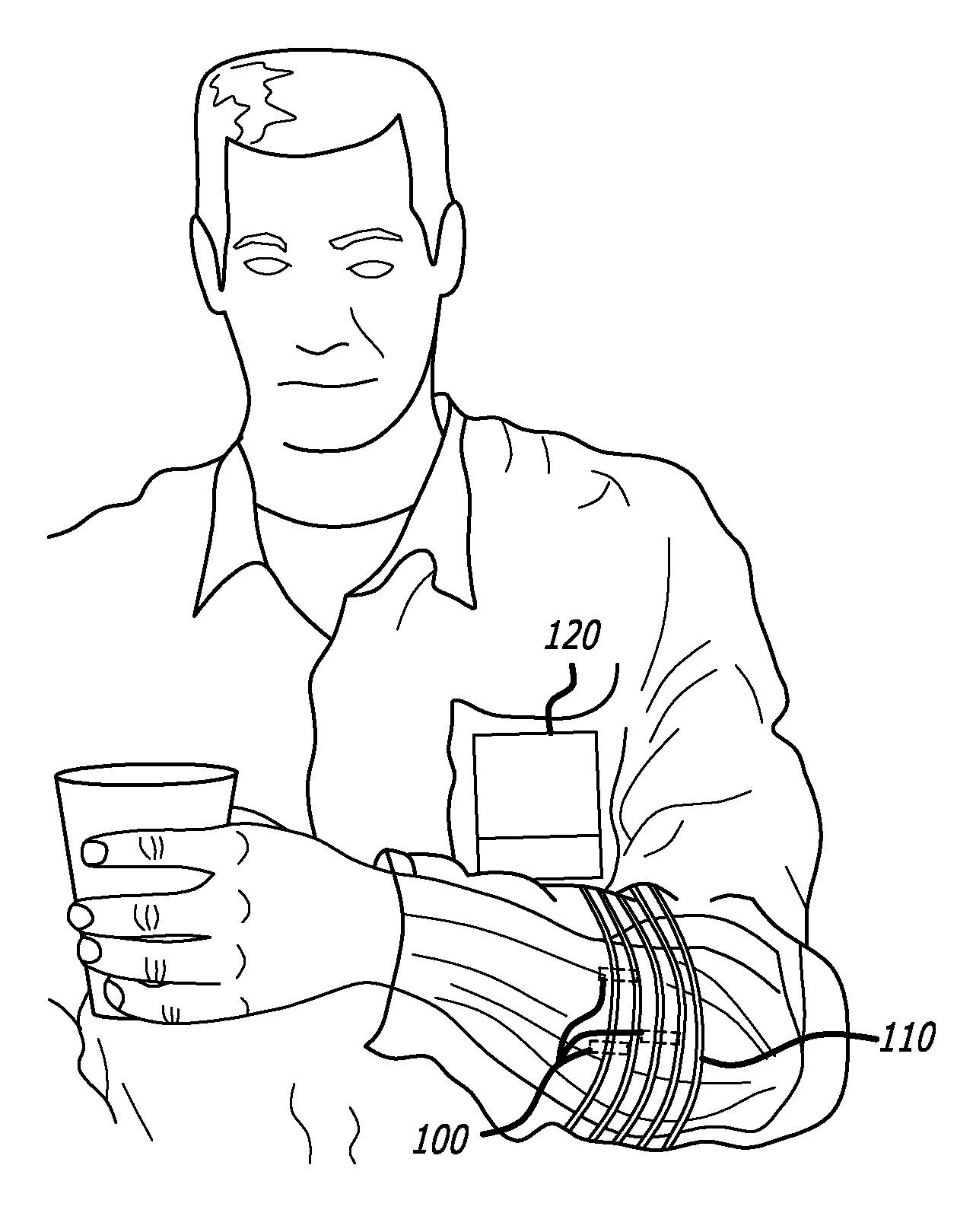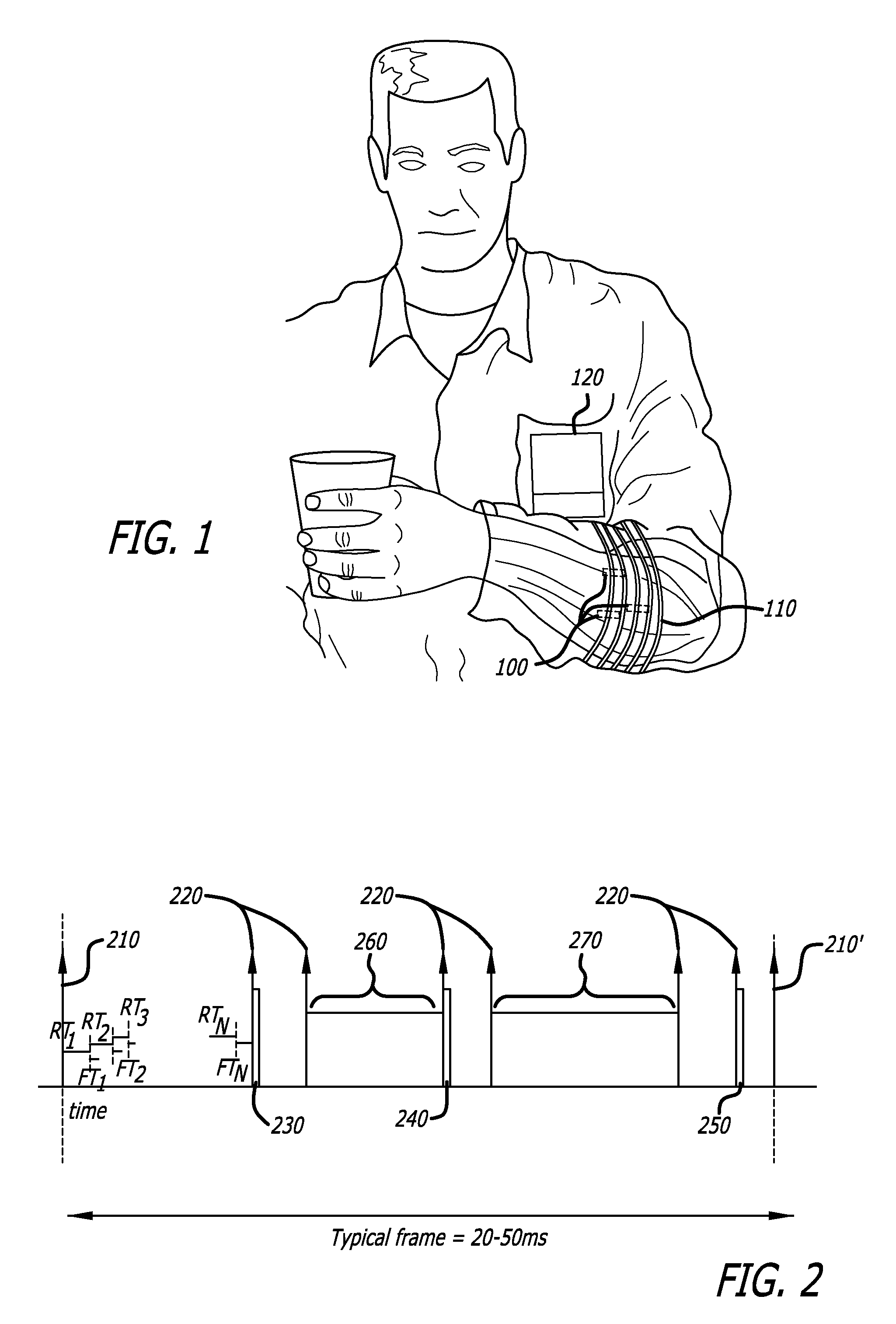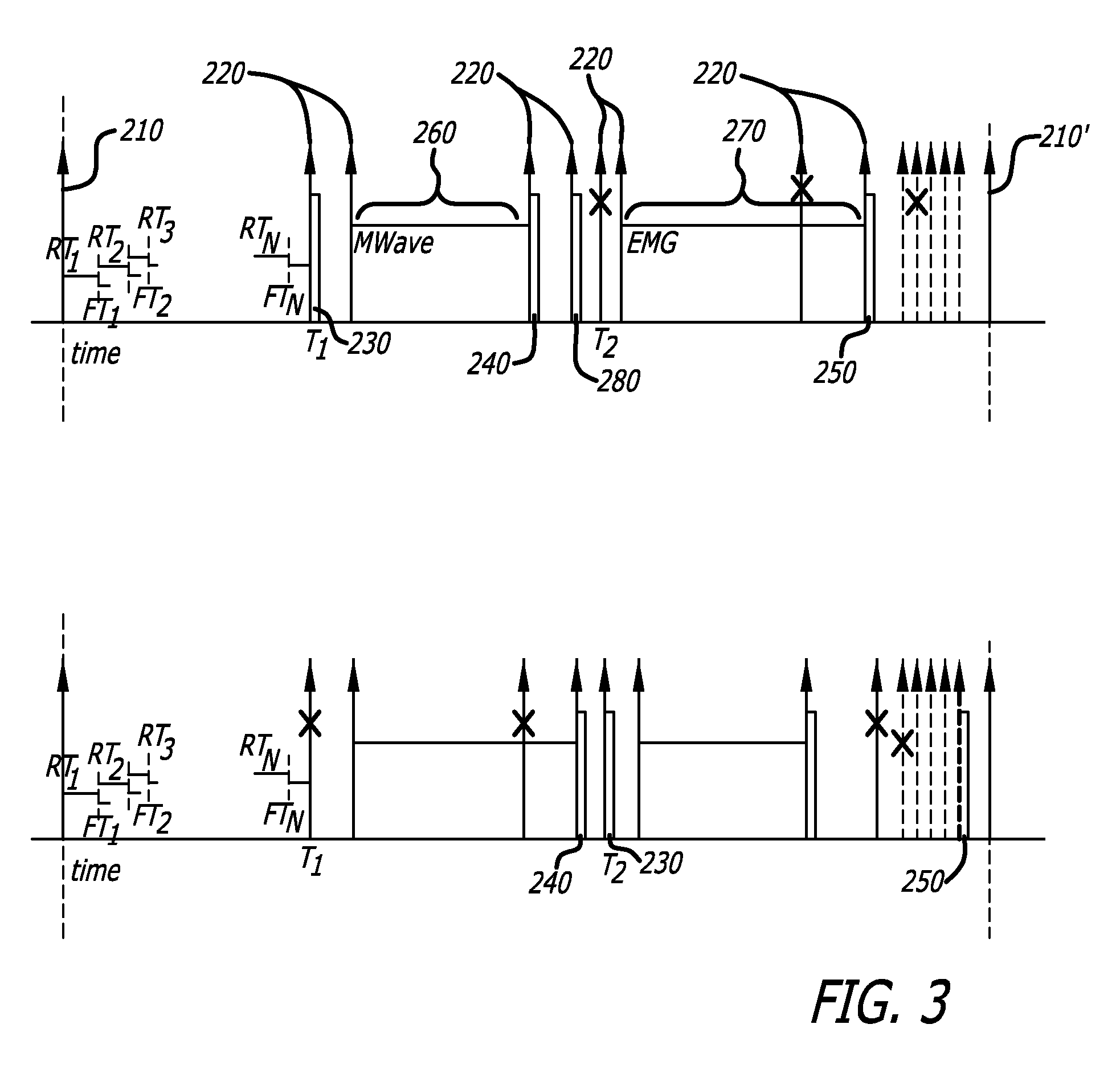Flexible Communication and Control Protocol for a Wireless Sensor and Microstimulator Network
a wireless sensor and microstimulation technology, applied in the field of flexible communication and control protocol of implanted wireless sensors and microstimulation devices within the body, can solve the problems of difficult control of muscle stimulation, harm to patients, and difficulty in controlling the stimulation of current microstimulation systems, so as to achieve optimal performance and reliability
- Summary
- Abstract
- Description
- Claims
- Application Information
AI Technical Summary
Benefits of technology
Problems solved by technology
Method used
Image
Examples
Embodiment Construction
[0023]The detailed description set forth below in connection with the appended drawings is intended as a description of exemplary embodiments and is not intended to represent the only embodiments in which the biomedical stimulation devices, methods and systems can be practiced. The term “exemplary” used throughout this description means “serving as an example, instance, or illustration,” and should not necessarily be construed as preferred or advantageous over other embodiments. The detailed description includes specific details for the purpose of providing a thorough understanding the biomedical network control systems. However, it will be apparent to those skilled in the art that the biomedical stimulation devices, methods and systems may be practiced without these specific details.
[0024]Electrical stimulation is a rehabilitation therapy that has been widely used to exercise weak and paralyzed muscles, nerves or any other tissues in order to prevent or reverse disuse atrophy. The ...
PUM
 Login to View More
Login to View More Abstract
Description
Claims
Application Information
 Login to View More
Login to View More - R&D
- Intellectual Property
- Life Sciences
- Materials
- Tech Scout
- Unparalleled Data Quality
- Higher Quality Content
- 60% Fewer Hallucinations
Browse by: Latest US Patents, China's latest patents, Technical Efficacy Thesaurus, Application Domain, Technology Topic, Popular Technical Reports.
© 2025 PatSnap. All rights reserved.Legal|Privacy policy|Modern Slavery Act Transparency Statement|Sitemap|About US| Contact US: help@patsnap.com



